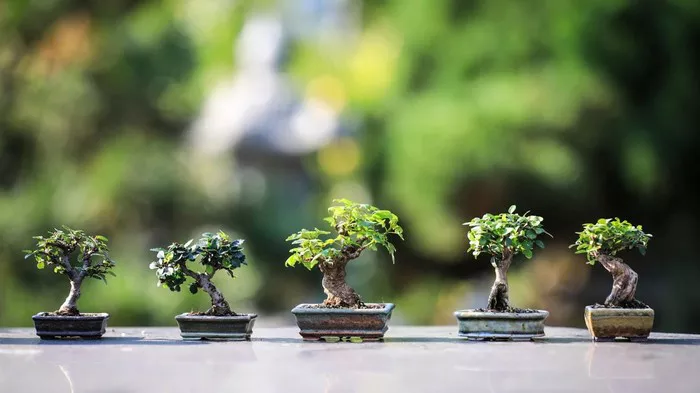Bonsai, a timeless and revered horticultural art form, has captivated enthusiasts for centuries with its delicate beauty and profound symbolism. Originating in China and later refined in Japan, the practice of cultivating miniature trees in containers has evolved into a cherished cultural tradition celebrated worldwide. Beyond its aesthetic appeal, bonsai embodies rich cultural significance and philosophical depth, serving as a metaphor for harmony, balance, and the eternal cycle of life. In this comprehensive exploration, we delve into the essence of bonsai, unraveling its meaning, history, techniques, and enduring allure.
Origins and Evolution
The roots of bonsai trace back to ancient China, where miniature landscapes known as penjing first emerged during the Han dynasty (206 BCE – 220 CE). These early precursors to bonsai featured carefully pruned trees and rock formations, symbolizing miniature natural landscapes. Penjing eventually made their way to Japan, where they underwent further refinement and adaptation, culminating in the development of bonsai as it is known today.
During the Kamakura period (1185–1333), Japanese monks and aristocrats began cultivating bonsai as a form of meditation and spiritual practice. The meticulous care required to shape and maintain these miniature trees mirrored the discipline of Zen Buddhism, emphasizing patience, mindfulness, and connection to nature. Over time, bonsai cultivation spread beyond the confines of monasteries, becoming increasingly accessible to the general population.
Symbolism and Philosophy
At its core, bonsai embodies a profound reverence for nature and the passage of time. Each tree represents a harmonious fusion of human intervention and natural beauty, encapsulating the inherent balance between control and spontaneity. The practice of shaping and pruning bonsai reflects a deep understanding of horticulture, aesthetics, and symbolism, with practitioners striving to evoke a sense of age, maturity, and tranquility in their creations.
In Japanese culture, bonsai is imbued with symbolic significance, often evoking themes of resilience, endurance, and the transient nature of existence. The gnarled branches and twisted trunks of ancient bonsai trees speak to the resilience of nature in the face of adversity, serving as reminders of the impermanence of life and the inevitability of change. In this way, bonsai becomes a tangible expression of wabi-sabi, the Japanese aesthetic philosophy centered on embracing imperfection and transience.
Techniques and Practices
The art of bonsai encompasses a myriad of techniques, each carefully honed to achieve specific aesthetic effects and ensure the long-term health and vitality of the tree. Central to bonsai cultivation is the process of pruning, which involves selectively removing branches and foliage to maintain the desired shape and proportions. Wiring is another essential technique used to bend and train branches, allowing practitioners to sculpt the tree’s silhouette with precision and finesse.
In addition to pruning and wiring, bonsai enthusiasts employ various methods to enhance the tree’s overall appearance and mimic the effects of aging. Techniques such as deadwood carving, which involves carefully sculpting and weathering the exposed wood to resemble natural decay, can imbue bonsai with a sense of venerable age and character. Similarly, techniques like grafting and air-layering enable practitioners to manipulate the tree’s growth patterns and create unique aesthetic effects.
Cultural Significance and Global Impact
While deeply rooted in Japanese culture, bonsai has transcended geographical and cultural boundaries, captivating enthusiasts around the world with its timeless beauty and universal appeal. Today, bonsai clubs, exhibitions, and competitions can be found in countries spanning the globe, fostering a vibrant community of practitioners united by their passion for this ancient art form.
Beyond its aesthetic allure, bonsai serves as a powerful cultural ambassador, promoting cross-cultural exchange and fostering understanding between people of diverse backgrounds. Through the shared language of bonsai, enthusiasts from different countries and cultures come together to celebrate their mutual appreciation for nature, artistry, and craftsmanship.
Conclusion
In conclusion, bonsai represents far more than just a miniature tree in a pot; it embodies centuries of tradition, cultural significance, and philosophical depth. From its humble origins in ancient China to its widespread popularity in modern times, bonsai continues to captivate and inspire people around the world with its timeless beauty and profound symbolism. As we cultivate and care for these miniature masterpieces, we not only connect with nature but also with the enduring spirit of creativity, mindfulness, and harmony that bonsai embodies.


